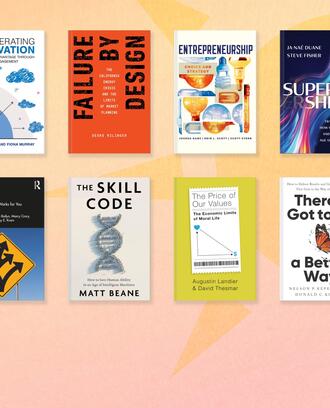For many people, COVID-19 began as a distant story. Now it’s a threat filling every corner of life. Markets have plunged, settled uneasily, and plunged again. Sports seasons are suspended. Schools are closing, along with restaurants and bars. People are huddled at home. And companies, amid it all, are struggling to balance employee and public health with the maintenance of basic operations.
“The obvious answer that comes to everyone is, ‘oh, let’s go virtual,’” said professor Alex “Sandy” Pentland, director of MIT Connection Science, in a recent webinar.
In sectors where this is feasible, employees just work from home. “But that is not as simple as it looks,” he said.
The fact is, companies derive subtle but profound value from social interaction. Pentland noted that productivity and sound decision-making rely heavily on informal communication, like hallway run-ins or coffee breaks. Companies suffer when this gets stripped away. Likewise, employee trust, solidarity, and mental health rely on the hundreds of minute affirmations and gestures of support that we offer those around us every day: expressions of understanding or empathy, nods of courtesy, morning greetings, and so on.
That’s problematic news, given COVID-19 shows no signs of abating. Recent research out of Imperial College London projects that preventing a massive overload of the U.S. health care system and as many as 2.2 million deaths will require drastic restrictions on social gatherings, including work and school, for up to 18 months. The world we occupy now may persist for a long time. Pentland highlighted strategies for preserving, as much as possible within virtual work environments, the social fabric essential to success.
Monitor, and improve, communication
It’s important to monitor the quality of conversations that take place online, which inherently lack much of the interpersonal richness present in in-person discussions. As co-creator of the MIT Media Lab, Pentland has worked with MIT startups developing software tools responsive to this need.
RIFF Analytics, for example, uses artificial intelligence to analyze online conversation dynamics and provide real-time personalized feedback to each participant: Is anybody dominating the conversation? Is discussion as inclusive as it should be? Cogito, which is widely used in call centers, provides similar analysis of individual voices, helping people understand when their tone is too aggressive, or if they are interrupting.
These kinds of metrics can provide behavioral crutches in the absence of the clues we rely on during in-person communication, said Pentland, who is a co-founder of both RIFF Analytics and Cogito. If we can’t readily observe shifts in posture or tapping feet or subtle hand motions, then a computer should be our fallback interpreter.
Maintain inclusivity
Physical distance between an employer and employee can quickly develop into psychological distance, which means companies need to take extra care to involve people in decision-making when they work remotely.
One method Pentland suggested is secret voting on new ideas and initiatives. This reduces the cost of stating an opinion but lets everybody take part.
It also prevents “the loud guy from taking the day, which is particularly problematic online,” he said.
Idea markets, in which colleagues can vote new ideas up or down, are another way to keep people engaged.
Implementing processes like these can also help mitigate the blow to decision quality suffered in the absence of informal communication channels; providing everybody with a voice in a digital forum can help fill this hole.
Reward cohesion
Finally, though most companies are navigating financial straits, they should reward groups with social incentives. One idea is peer reward, where people working in a group vote for colleagues who have been helpful; those who receive the most votes get a bonus. (This needs to be designed so it doesn’t become a popularity contest that further alienates individuals.)
There should also be time for reinforcing social ties. Consider a remote movie viewing among coworkers, for example. With online chat open, “it could be something like Mystery Science Theater 3000,” Pentland suggested. “They can talk while watching, make snarky comments.”
Personally, he has scheduled tea over Zoom with his colleagues. People can also be partnered up for weekly discussions about challenges outside of work, like childcare coverage. And for small groups of employees who live in the same town, perhaps they can meet for coffee, assuming the appropriate social distancing and hygiene measures are put in place.
In the end, Pentland explained that thinking through these dimensions of building an effective online workplace is not simply a matter of emergency preparedness. It could be central to competitive strategy and long-term success moving forward.
“This COVID thing — it’s not clear how it’s going away, and we may need to manage it, or the next thing like it, continuously,” he said. “We need to be able to think about how we build structures that are not only resistant and resilient to economic and political shock, but also this sort of shock. We’ve been very lucky in the last long period of time.”



